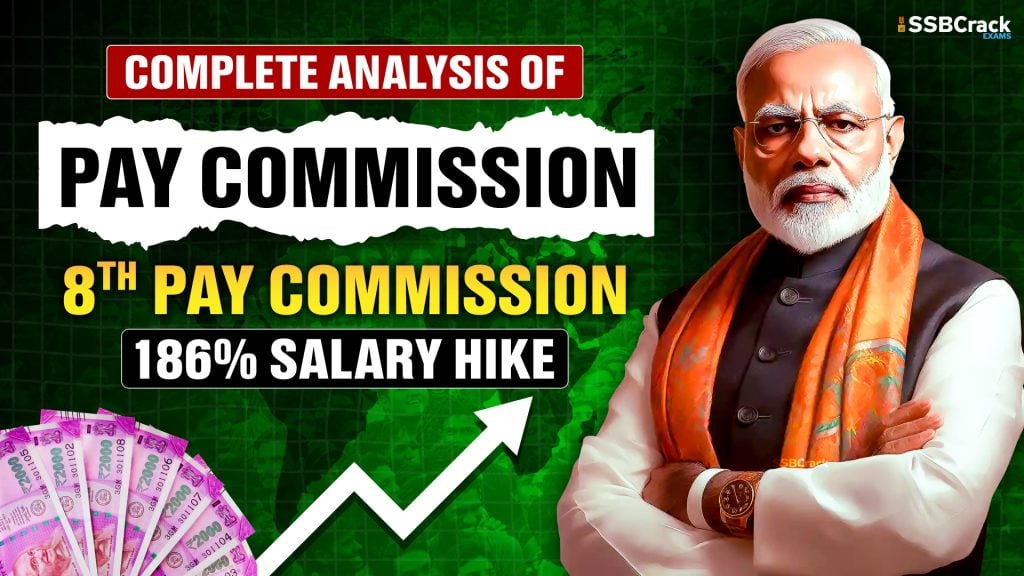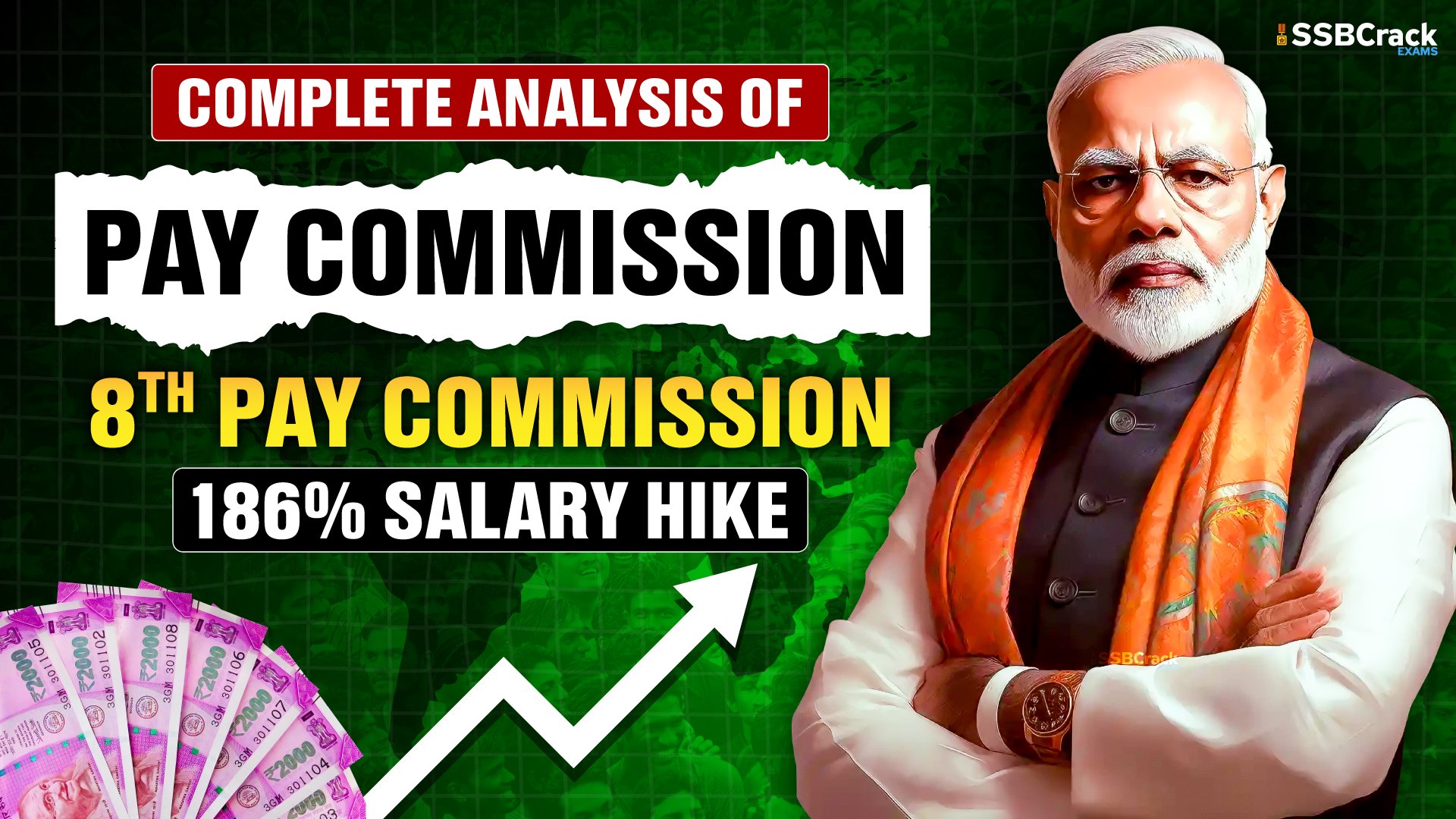As the 8th Pay Commission has been announced, explore the journey of salary hikes for central government employees in India, from the 1st to the 7th Pay Commission — implementation years, minimum salaries, and key recommendations.
Complete History of Pay Commission
The salary structure for central government employees in India has evolved significantly over the years — from Rs 55 per month in 1946 to Rs 18,000 per month currently, guided by the recommendations of various pay commissions established by the government. Each Pay Commission has aimed to balance the interests of employees with the financial prudence of the government, leading to changes in salary scales, allowances, and overall benefits. With the recent announcement of the 8th Pay Commission, slated for implementation from January 1, 2026, it is worth revisiting the journey of salary revisions from the 1st to the 7th Pay Commission.
According to reports, under the 8th Pay Commission, the basic pay of central government employees will increase from Rs 18,000 per month to over Rs 51,000 per month. Here’s a look at the seven Pay Commissions so far and the salaries recommended by them:

1st Pay Commission (1946)
Implementation Year: 1947
Key Features:
- Focused on improving living standards for employees.
- Minimum salary was fixed at Rs 55 per month.
- Emphasis on equitable pay structure.
- Ratio of the highest salary to the minimum salary was 1:41.
Impact:
Although the recommendations addressed post-independence challenges, they highlighted the need for a better salary structure for lower-income groups.
2nd Pay Commission (1957)
Implementation Year: 1959
Key Features:
- Minimum salary raised to Rs 80 per month.
- Focus on reducing disparities in wages.
- Recommended provisions for family allowances and retirement benefits.
Impact:
The changes improved financial security for employees, reflecting the growing economic challenges of the 1950s.
3rd Pay Commission (1970)
Implementation Year: 1973
Key Features:
- Minimum salary increased to Rs 185 per month.
- Addressed cost of living by introducing dearness allowance (DA) as a relief measure against inflation.
- Focused on pay parity between various groups of employees.
Impact:
Introduction of DA was a game-changer, ensuring that employees’ salaries were adjusted in line with inflation rates.
4th Pay Commission (1983)
Implementation Year: 1986
Key Features:
- Minimum salary increased to Rs 750 per month.
- First attempt at comprehensively restructuring pay scales.
- Recommendations for increasing housing and travel allowances.
Impact:
The substantial pay hike addressed inflation and improved employee satisfaction. However, the implementation was criticized for delays.
5th Pay Commission (1994)
Implementation Year: 1997
Key Features:
- Minimum salary raised to Rs 2,550 per month.
- Recommended merging 50% of DA with basic pay for better financial stability.
- Focused on employee welfare schemes.
Impact:
A significant increase in salaries improved the purchasing power of employees. However, the recommendations led to increased financial strain on the government.
6th Pay Commission (2006)
Implementation Year: 2008
Key Features:
- Minimum salary increased to Rs 7,000 per month.
- Introduction of Pay Band and Grade Pay system for streamlining salary structures.
- Emphasis on performance-based incentives.
Impact:
The introduction of the Pay Band system simplified salary structures and provided clarity on career progression. Despite criticism of delayed implementation, it was largely seen as employee-friendly.
7th Pay Commission (2013)
Implementation Year: 2016
Key Features:
- Minimum salary raised to Rs 18,000 per month.
- Removal of Pay Band and Grade Pay system, replaced by Pay Matrix.
- DA rates to be revised biannually.
- Recommendations for improving pension benefits.
From 1st To 7th Pay Commission: Salary Hikes So Far
As the 8th Pay Commission has been announced, here are the basic salaries of central government employees recommended by the previous seven pay commissions.
| Pay Commission | Implementation Year | Minimum Salary (₹) | Key Features |
|---|---|---|---|
| 1st | 1947 | 55 | Focused on basic living standards. |
| 2nd | 1959 | 80 | Introduced family allowances. |
| 3rd | 1973 | 185 | Introduced DA for inflation adjustment. |
| 4th | 1986 | 750 | Comprehensive pay structure revision. |
| 5th | 1997 | 2,550 | Focused on welfare and DA adjustments. |
| 6th | 2008 | 7,000 | Introduced Pay Band and Grade Pay system. |
| 7th | 2016 | 18,000 | Introduced Pay Matrix for transparency. |
| 8th* | 2026 | 51,480 | — |
*These figures are estimates based on the anticipated fitment factor and subject to final recommendations of the 8th Pay Commission.
8th Pay Commission: How Much Is the Salary Hike Expected?
Under the 7th Pay Commission, the fitment factor was set at 2.57, which increased the minimum basic pay from Rs 7,000 to Rs 18,000. The fitment factor is a multiplier applied to the current basic pay to calculate the new salary under the revised Pay Matrix.
For the 8th Pay Commission, it is widely expected that the fitment factor will rise to 2.86, potentially increasing the minimum basic pay to Rs 51,480, a jump of 186 per cent over the current Rs 18,000.
The 8th Pay Commission will be implemented on January 1, 2026. It means the central government employees might start receiving their increased salaries from February 2026 (which will be the salary for the month of January 2026).




















